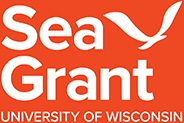River Talk Focuses on Geology
The next monthly River Talk is scheduled for Thursday, Jan. 22, 7 p.m. at the Lake Superior National Estuarine Research Reserve Learning Center (3 Marina Dr., Barker’s Island, Superior, Wis.). Andrew Breckenridge, associate professor in the Natural Sciences Department at the University of Wisconsin-Superior, will present, “Formation Story: How the St. Louis River Came to Be, Geologically.”


